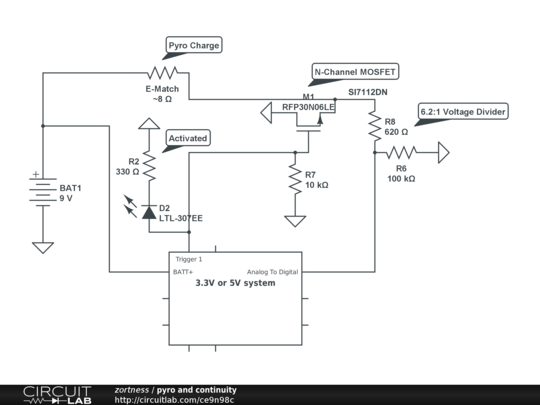zortness
Active Member
- Joined
- Jun 21, 2013
- Messages
- 36
- Reaction score
- 0
I'm not an EE, so I'm learning this as I go, with the help of some people here on the forum (like awseiger) and some friends of mine who are EEs.
Wondering if anyone has any feedback on this initial design for controlling a pyro charge ignition via N-Channel MOSFET, and also reading continuity. I currently control the pyros in my prototypes with solid state relays, but MOSFETs seem like a more standard, smaller footprint, and much cheaper choice.
In the diagram, just assume the 3.3V system is regulated, but logic input/output is on those levels.

I've noticed some examples where people tie the continuity reading directly into an MCU, but I'm not particularly comfortable with that. I also want to be able to support voltages between 6V and 20V. I also want to be able to support a wide variety of ignition sources with varying resistances.
Feedback appreciated, thanks everyone! I'll keep the diagram updated.
Wondering if anyone has any feedback on this initial design for controlling a pyro charge ignition via N-Channel MOSFET, and also reading continuity. I currently control the pyros in my prototypes with solid state relays, but MOSFETs seem like a more standard, smaller footprint, and much cheaper choice.
In the diagram, just assume the 3.3V system is regulated, but logic input/output is on those levels.
I've noticed some examples where people tie the continuity reading directly into an MCU, but I'm not particularly comfortable with that. I also want to be able to support voltages between 6V and 20V. I also want to be able to support a wide variety of ignition sources with varying resistances.
Feedback appreciated, thanks everyone! I'll keep the diagram updated.



